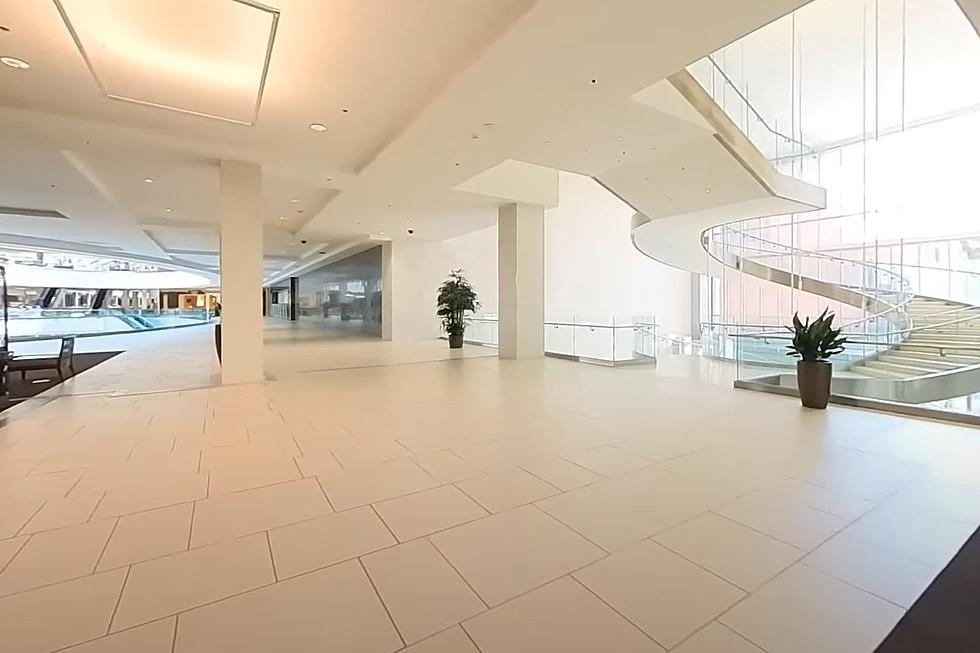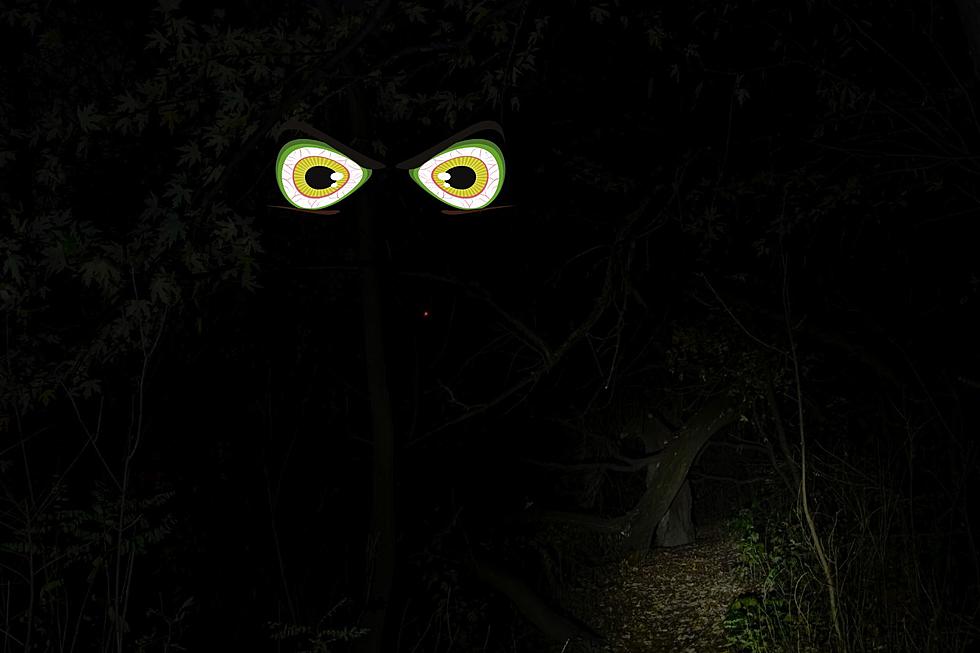
See One Of These 8 Invasive Bugs In Washington? Squish Them Quick!
It seems like every day we are being invaded by different bug species in Washington State, but how many are we really facing? Turns out there are a lot more invasive species of insects in Washington State than I knew about.
If you see any of these, make sure to kill them and then take a picture to send to the WSDA.
APPLE MAGGOT
This is the worst invasive threat for the apple farmers of Washington State. The apple maggot is "considered one of the worst apple pests in the world, and is a major threat to Washington apple production" according to the WSDA website. This species has been seen in 22 of the 39 total counties in Washington State and has been here since spotted in 1980.
Its main characteristics are described as:
- "Apple maggots are cream-colored, maggot-shaped larvae that grow up to 1/4 inch when mature.
- Adults are also black-bodied.
- Wing patterns are banded with black markings."
ASIAN GIANT HORNET
Most people in Washington State have now heard of the Murder Hornet. This invasive species from Asia has been spotted in Washington State for the last 2 years. They prey on honeybees and are a very large threat to our honeybee industry here. In Europe, the hornets destroyed 30% of the honeybee population and 2/3 of the honey-field according to reports.

The characteristics of the Asian Giant Hornet are:
- "Asian giant hornets grow to 1½ inches in length.
- Bodies are marked by yellow or orange and black stripes with large yellow or orange heads.
- Wingspan is about 3 inches."
BROWN MARMORATED STINK BUG
If you saw this crawling on your back patio, you might not pay any attention but you should. This bug that comes from Asia can attack and eat 170 of our plants and vegetables in Washington State. It eats small sections of the plants causing the rest to die and become unusable. It can eat the plants in your garden all summer and survive inside your house in the winter. They also harm beneficial species in Washington like Lady Bugs. You can catch it with pheromones and light traps.
The characteristics of the Stink Bug are:
- "Mottled brown and shield-shaped, 1/3 to 2/3 inches long.
- Antennae, abdomen, and legs have alternating dark and light bands.
- The edge of the shoulder is smooth when looking down at the insect"
LONG-HORNED BEETLES
There are 3 different kinds of Long-horned Beetles that the WSDA is concerned about, Citrus, Asian, and Red-necked Beetles. These species eat hardwood and are very hard on the hardwood trees of Washington. These beetles have not managed to spread into Washington yet and are mostly found in stock delivered from Asia. If these beetles manage to populate Washington, they will attack over 70 different types of live trees and could be devastating to our forests.
Characteristics of the Long-Horned Beetle are:
- "Large, robust beetle
- Glossy black with irregular splotches of white on the wings.
- The antennae are quite striking with bands of black and gray.
- The feet and legs are decorated with a slate blue pubescence."
EMERALD ASH BORER
Another insect pest from Asia that attacks and kills Ash trees. They lay their larva under the tree bark where they eat the sapwood and kill the tree. They are established in other parts of North America but not yet in Washington State. They are found with small infestations from other areas in firewood and shipping containers.
Characteristics of the Emerald Ash Bore are:
- "Adults are a jewel-like metallic green.
- Elongated narrow shape, about a half-inch long
- Woodpeckers eat emerald ash borer larvae, so heavy woodpecker damage on an ash tree is a possible sign of infestation.
- When the new adult emerges from the tree trunk in the spring, it leaves a D-shaped exit hole that is rounder on one side and flatter on the other."
EUROPEAN CHAFER
If you are having problems with your grass, this insect might be the problem. This beetle from Europe lays its eggs in the roots of grass and the larva then feeds on it. That kills the grass and leaves large dead patches in the springtime. The beetles do not bite or sting humans and are mostly an annoyance by destroying grasslands. This beetle has been found in Washington State since 2015.
Characteristics of the European Chafer:
- "Adults are about ½ inch long, brick red in color.
- Larvae ¼ to 1 inch long, dark brown head, C-shaped body with noticeable legs."
ONION LEAF MINER
It is a fly from Europe that burrows and attacks plants like chives, onions, and garlic. They leave little white tunnels on the leaves of the plants as they eat that are visible. The larva turns into pupa at the end of the tunnel. Plants infested curl and then become wilted. they have not established colonies in Washington State but are in the US and show up now and again with temporary infestations.
Characteristics of the Onion Leaf Miner are:
- "Adults have yellow heads, knees, sides of abdomens; otherwise mostly dark gray, just over 1/10 inch long.
- Pupae are red-brown, slightly longer than adults.
- Larvae are white to yellow, up to about 1/3 inch long.
- Eggs are white, about 1/50 inch long, found on leaves.
- Adult feeding holes found in rows, with milky white sap coming out."
SPONGY MOTH
There are multiple kinds of Spongy Moths the WSDA is worried about. The "Lymantria dispar asiatica, Lymantria dispar dispar, and other invasive moths including rosy moths (Lymantria mathura) and nun moths (Lymantria monacha)" according to the WSDA website. They eat the leaves of over 500 different species of plants in Washington and cause large amounts of damage to both the environment and the economy. They have not managed to establish in Washington State but do cause infestations every year. They estimate that the damage from Spongy Moths in Washington equal to over $30 million every year for the past 20 years.
Characteristics of the Spongy Moth are:
- "Spongy moth adult males are light brown. Lymantria dispar dispar moth females are white with dark zigzags on the wings and do not fly.
- The spongy moth has a wing span of about 1 1/2 inches.
- Eggs masses of a hundred or more are laid on branches or other sheltered places. The masses are buff colored when freshly laid and will pale as they age.
- Mature larvae are covered in light-colored tufted hairs with five pairs of blue bumps followed by six pairs of red bumps down the back.
- The pupae (or resting stage between the caterpillar larva and adult moth) is a dark brick red and usually found under tree bark and crevices or other protected areas."
SIREX WOODWASP
For me, this is the freakiest looking big of the bunch. This wasp originates from Africa and Eurasia and mostly attacks Pine trees which we have plenty of in Washington State. They lay their eggs with a toxic fungus that kills the tree. they are not established inside of Washington State yet but are in the United States. Local wood-wasps attack dead and dying trees while Sirex attacks healthy trees.
Characteristics of the Sirex Wood-Wasp:
- "0.5-1.5 inches long as an adult.
- Cylindrical body, spear-shaped plate at the end of the abdomen, black antennae.
- Females: metallic blue head and body, orange legs, long spikey ovipositor (resembles a stinger).
- Males: metallic blue head and thorax, orange and black abdomen."
Five Of The Most Dangerous Invasive Species in Washington State
Gallery Credit: Rik Mikals
Tips to Prevent Spider Bites
Gallery Credit: Jaime Skelton
More From 97.1 KXRX

![[PHOTOS] Washington Wildfire Fury: Road Closures Announced](http://townsquare.media/site/134/files/2024/07/attachment-Untitled-design-26.jpg?w=980&q=75)




